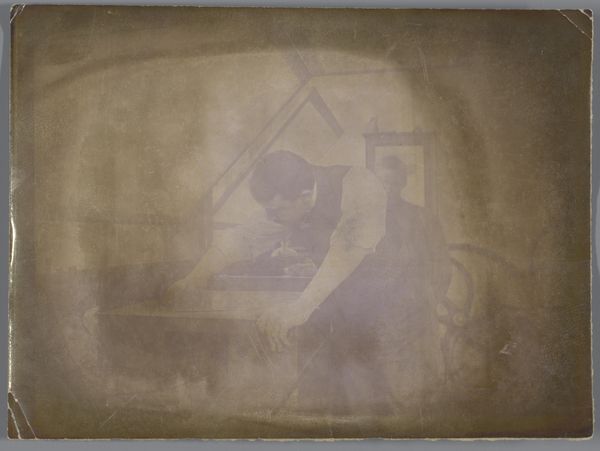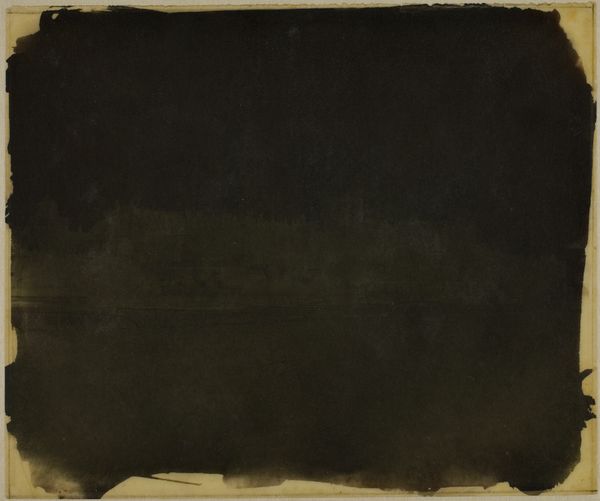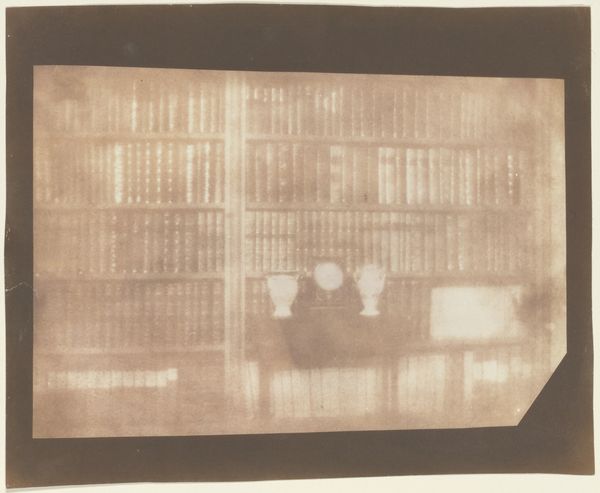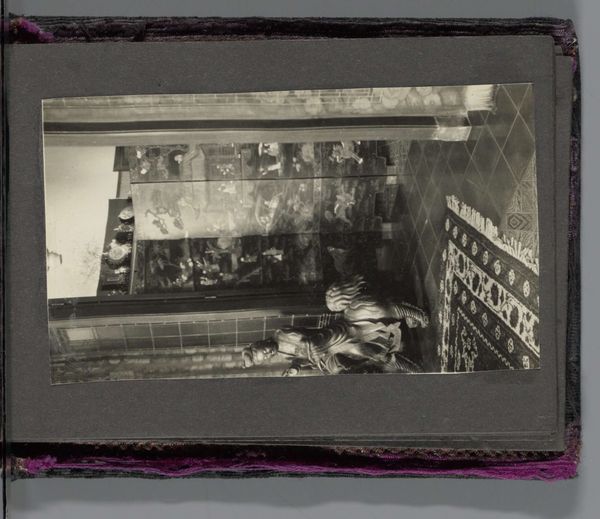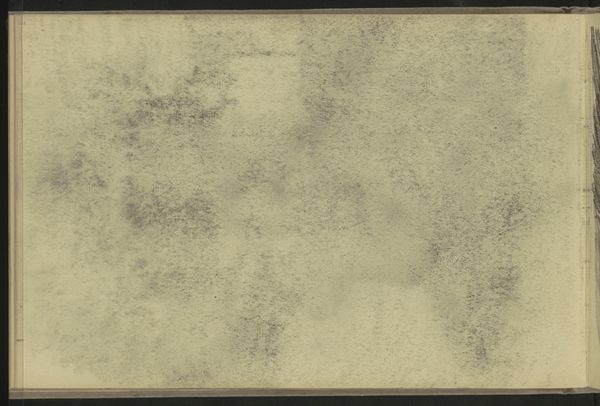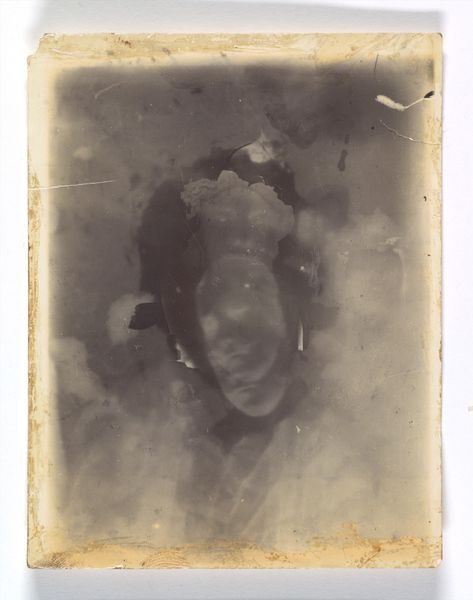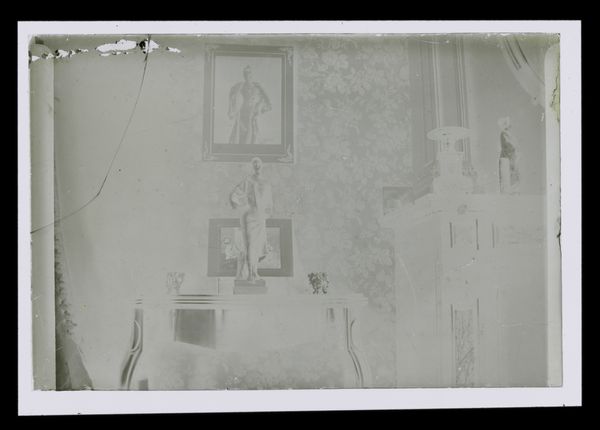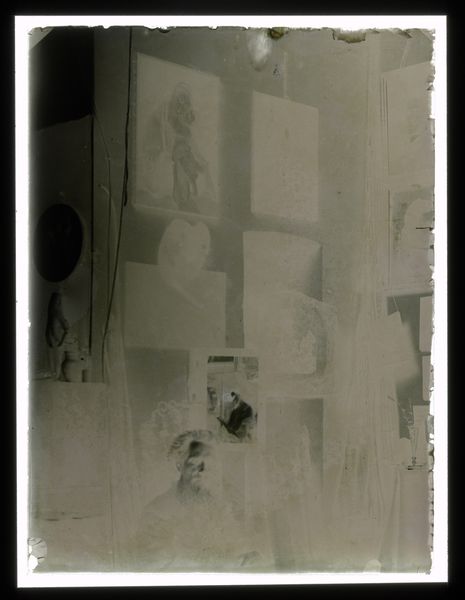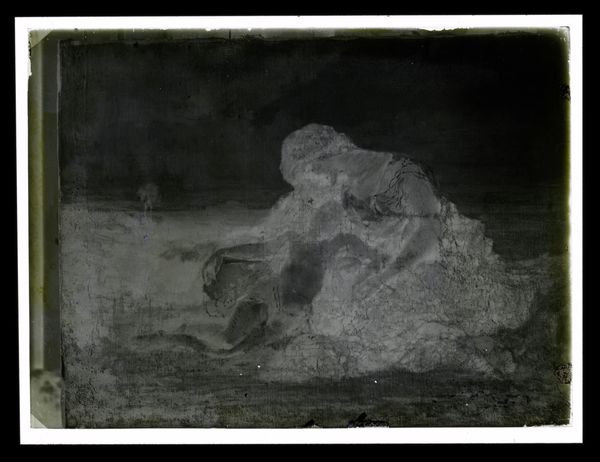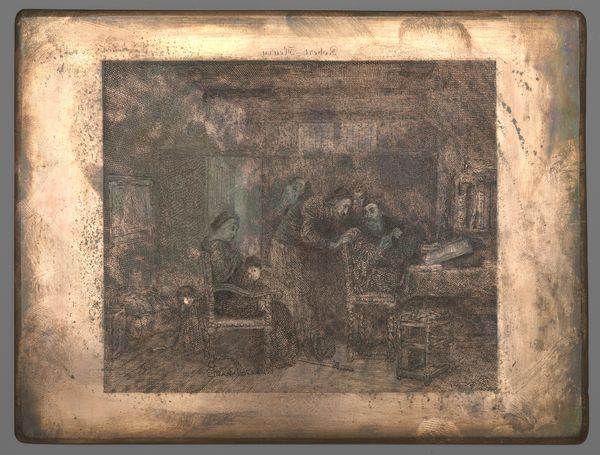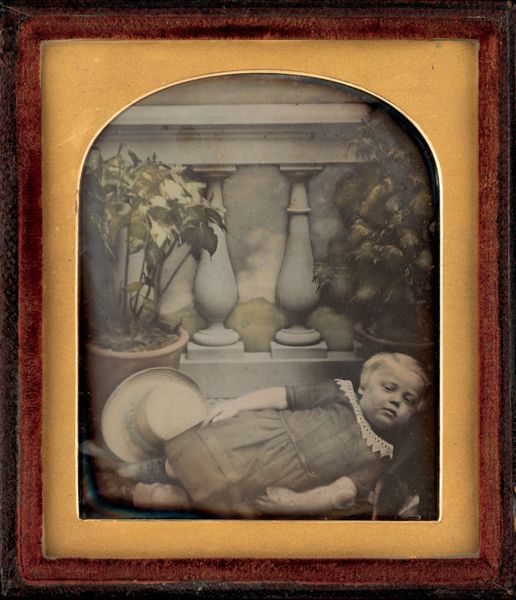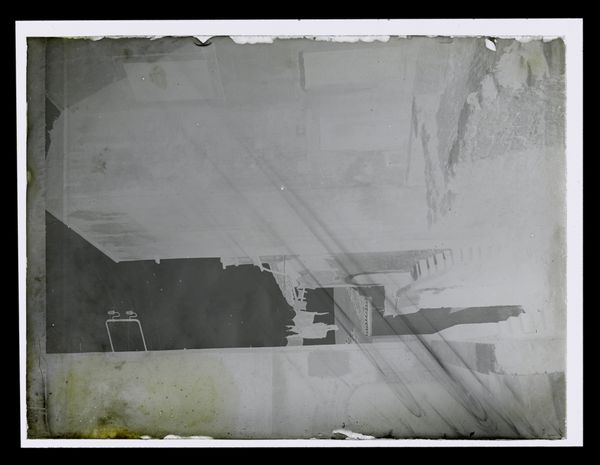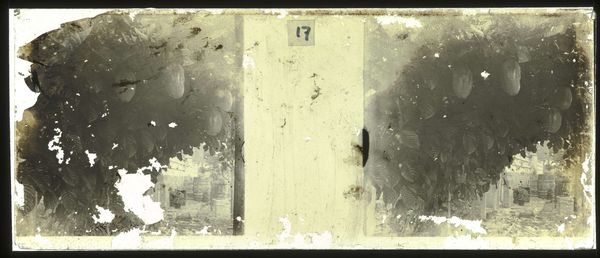
Dimensions: height 90 mm, width 120 mm
Copyright: Rijks Museum: Open Domain
Curator: George Hendrik Breitner captured this image, "Willem Witsen aan de tekentafel," sometime between 1880 and 1910. Editor: My initial impression is one of profound quietude. The limited tonal range almost muffles the scene, creating an atmosphere of hushed concentration. Curator: The Rijksmuseum houses this photograph. The print, a form of photography, resonates with the Intimist theme, capturing a personal, private moment. This piece gives insight into the artistic circles and relationships within the Amsterdam art scene. Breitner and Witsen were close, weren't they? Editor: Definitely, this photograph speaks of the impressionist circle, focusing less on stark realism and more on the subtle tones, like soft greys. Notice the positioning of Witsen's figure in relation to the light, it really draws you into the artist’s internal world. Curator: Precisely, and in light of that, observe how the social standing of artists evolved; Breitner captured Witsen not merely as a subject but as an equal. This reflects shifts in societal perspectives on the artistic profession. Editor: I see the formal elements reflecting societal changes as well: the texture almost conceals the subject while adding depth and hinting at the artist’s mood as if you were with the sitter in the same place, sharing his light and inner thoughts. Curator: Right. "Willem Witsen aan de tekentafel" contributes to a deeper understanding of the interactions between art, artist, and society during this era of profound societal transformation. Editor: Indeed. Considering how this era propelled artists into new territory and ways of seeing through photography’s formal language, it grants a privileged perspective. Curator: Studying the historical context in which the artist operates helps one fully comprehend the work’s intended impact, thus emphasizing the public role of the photograph. Editor: And observing the use of the texture or tone also creates an atmosphere ripe with new perceptions of the photograph as a narrative of human emotion.
Comments
No comments
Be the first to comment and join the conversation on the ultimate creative platform.
